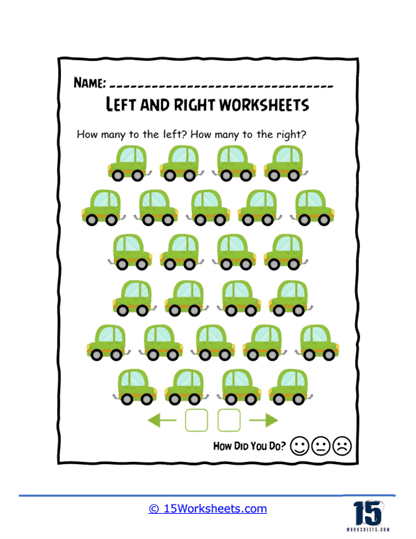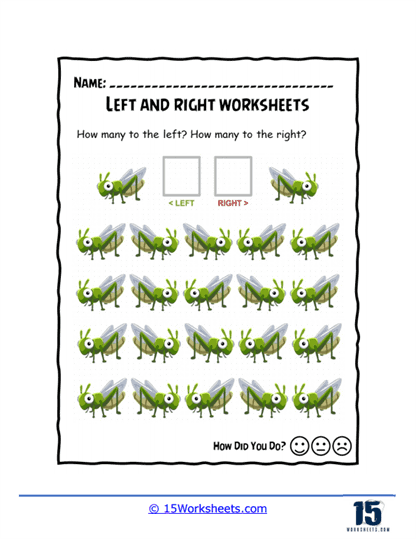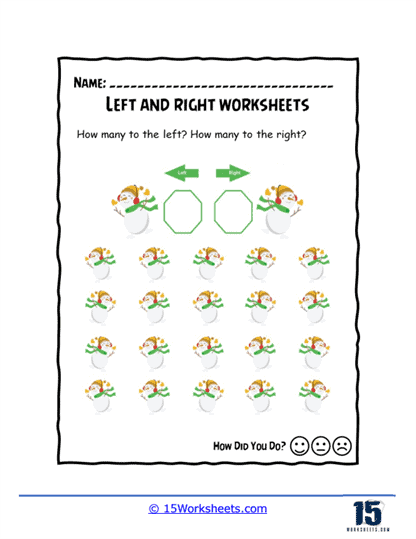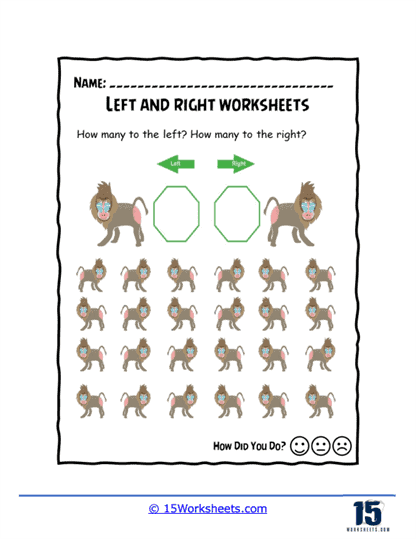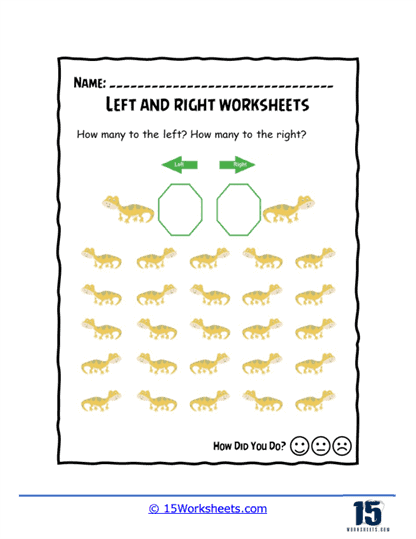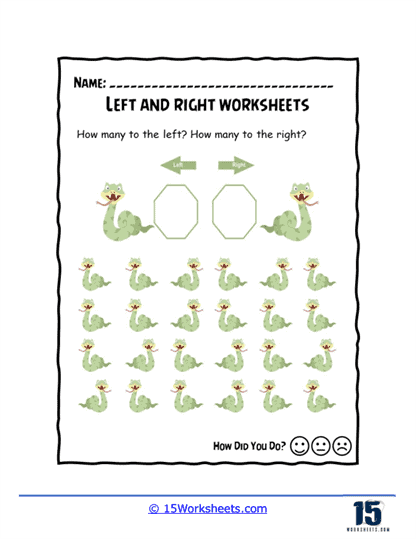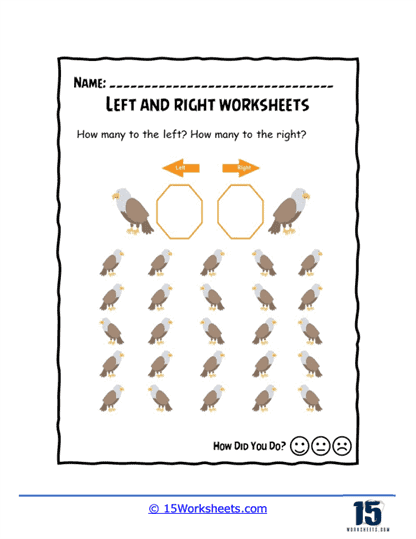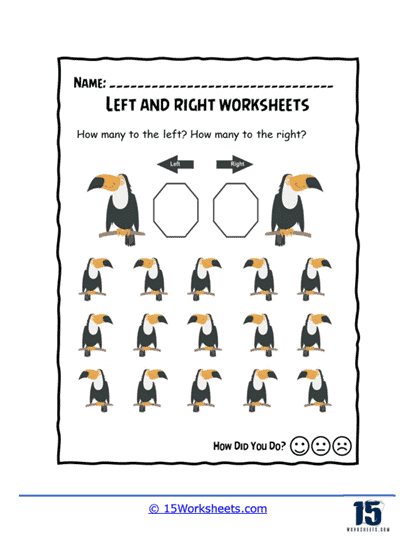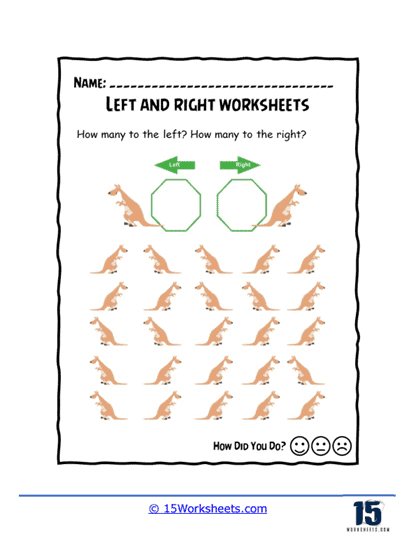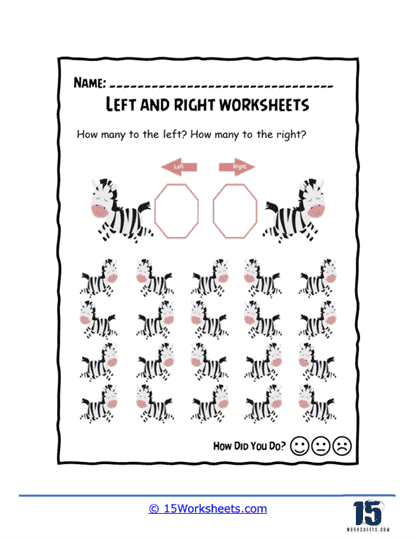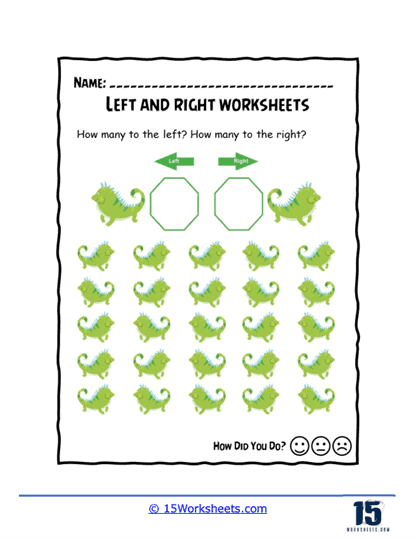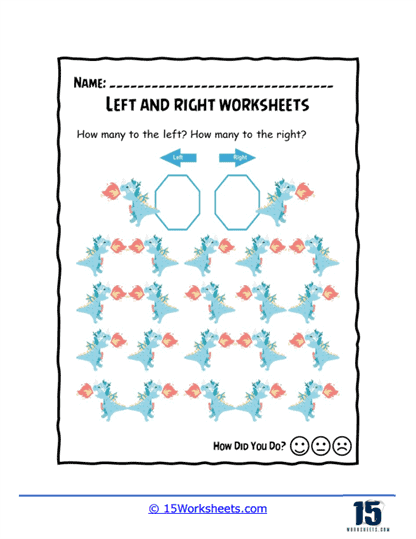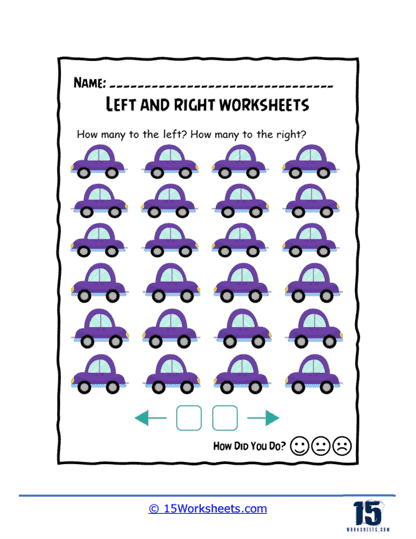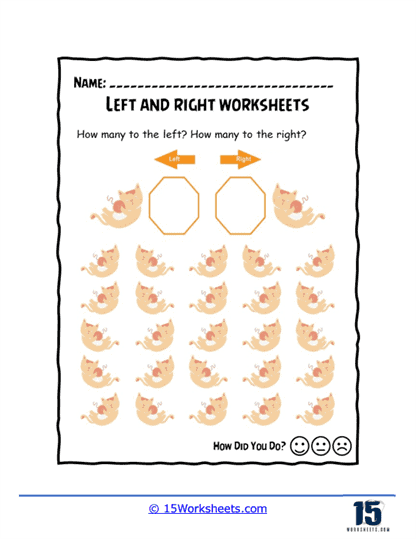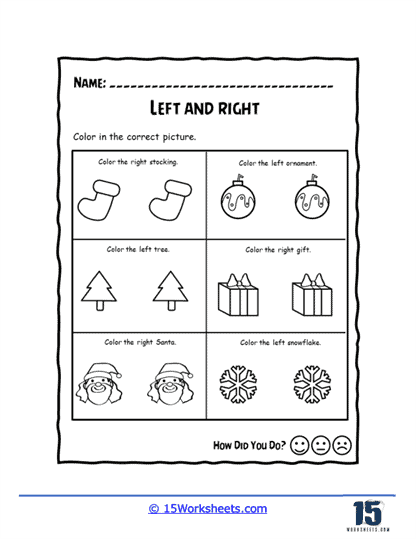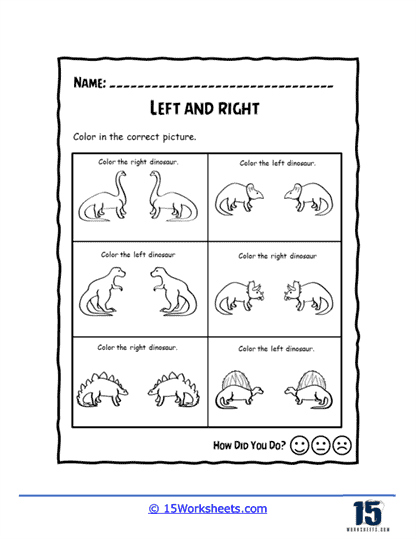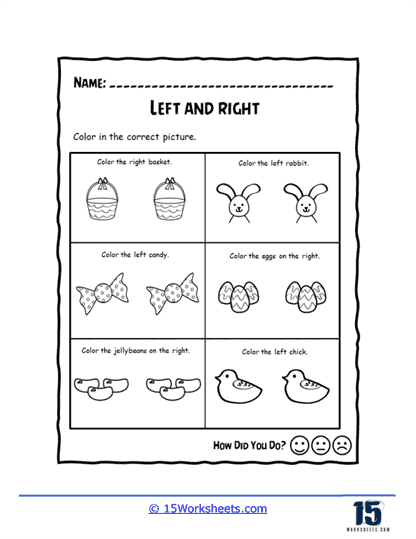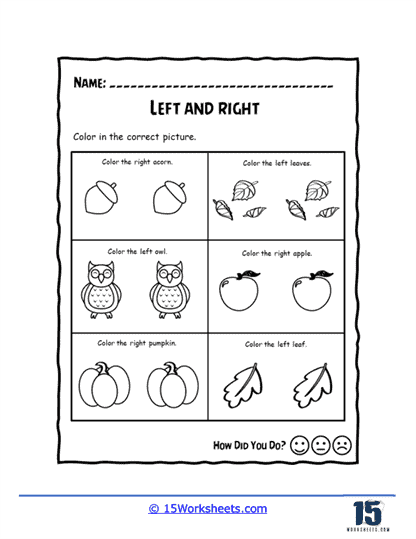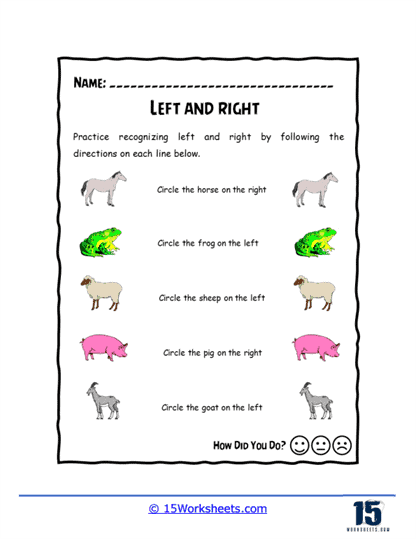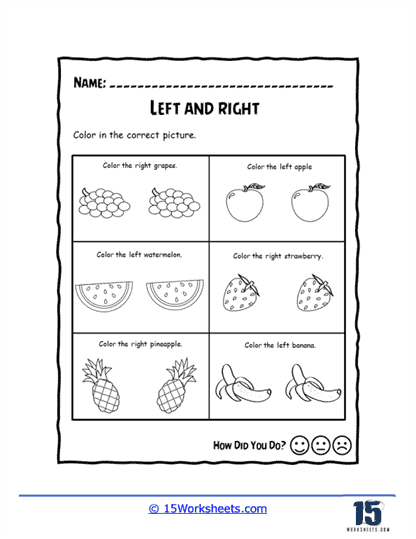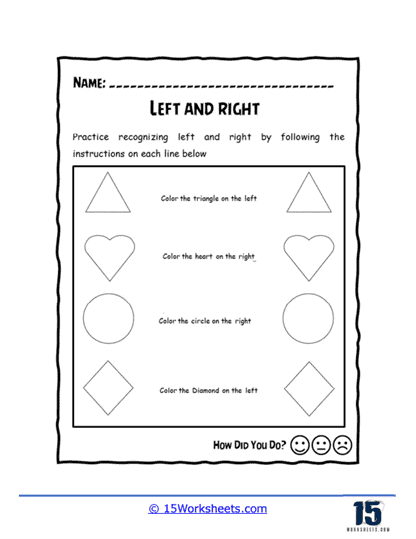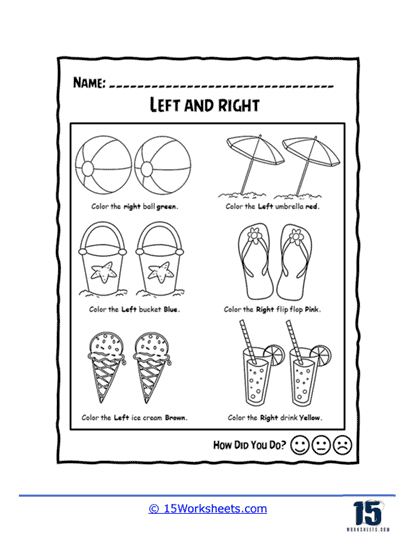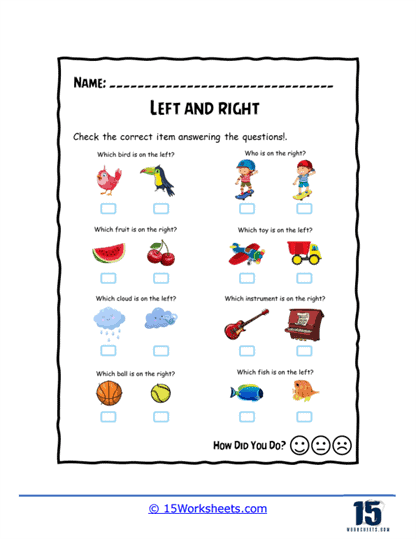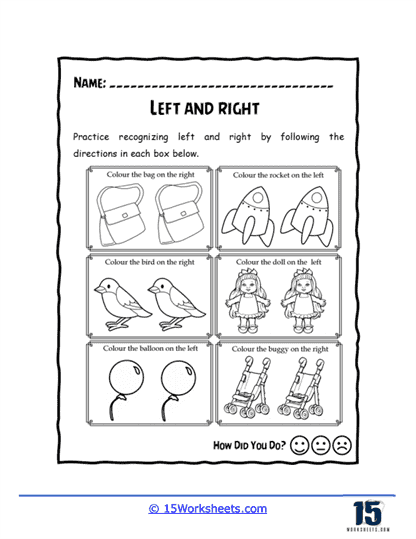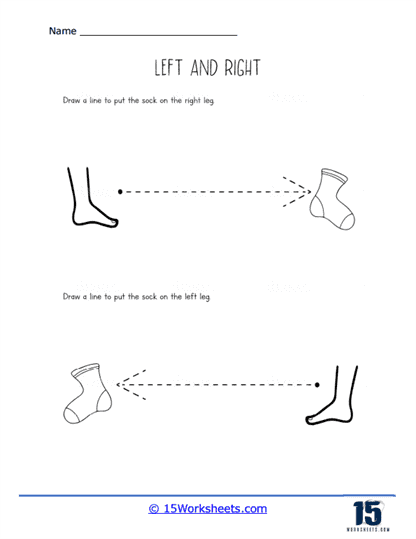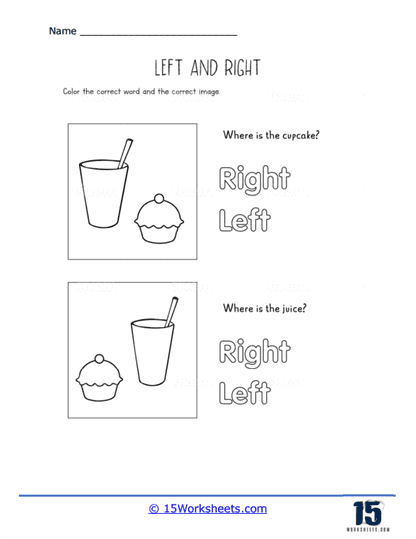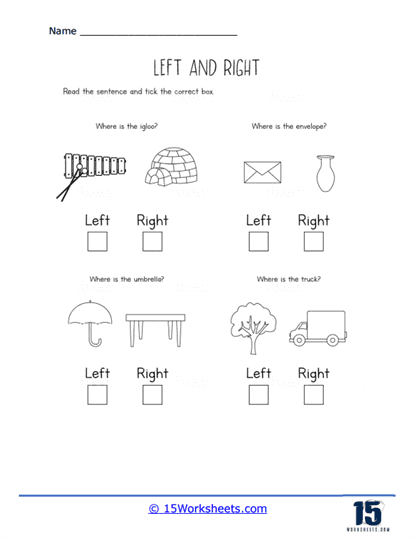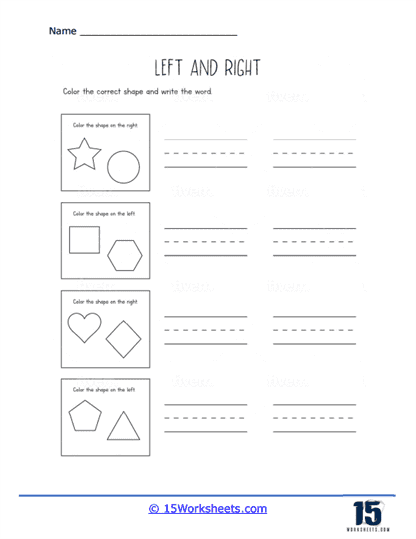Left or Right Worksheets
About These 15 Worksheets
These worksheets help students understand the basic spatial awareness skill of left or right in relation to something else. This is a concept that they can begin to grasp the concept of left and right between the ages of 3 and 5. However, it’s important to note that individual children may develop this understanding at different rates. Some children may pick up the concept earlier, while others may take a bit longer.
Firstly, do you know what ‘left’ and ‘right’ are? You probably do, but let’s go over it to be sure. Imagine you’re standing at the start of a race. If you stretch out your arms wide, the arm on the same side as your heart is your ‘left’, and the other one is your ‘right’. These are basic directions we use in our daily life, like when you’re playing a video game, or if your mom asks you to move a bit to the left while taking a photo.
Now, about these worksheets. “Left and Right Worksheets” are learning tools used at school or at home to help kids understand and remember the concept of ‘left’ and ‘right’ more effectively. These worksheets can be found in books or can be downloaded from the internet.
Picture this. You have a worksheet in front of you with several pictures on it. Maybe there’s a picture of a cute dog standing in the middle of a road, and two bones, one on each side of the road. The worksheet asks you to color the bone on the dog’s ‘right’. So, you’ll have to identify which side is the dog’s right and then color that bone.
The worksheets could be simple for beginners, where you just have to identify left and right. As they get more advanced, they may start combining the concepts. For example, there might be a picture of a ladder with apples on different steps, and the instructions could be ‘circle the apple that is third from the right’. This not only tests your understanding of ‘right’, but also your counting skills!
Just like the way we need to level up in games, the worksheets also level up with us. More complex worksheets for older kids might involve a series of directions involving left and right, almost like a mini treasure hunt!
These worksheets are a great way to practice and strengthen your understanding of the directions ‘left’ and ‘right’. And it’s important to understand these directions because we use them a lot. For example, in a sport like basketball, you need to know which way to dodge – left or right. Even in subjects like mathematics, understanding left and right helps in learning concepts such as symmetry.
How Do You Teach The Concept Of Left And Right?
Teaching the concept of left and right is an important spatial awareness skill for young children. Here are some strategies and activities that can help you teach this concept effectively:
Awareness and Visual Cues
Begin by helping children develop a clear understanding of their own left and right sides. Encourage them to identify and point to their left hand, right hand, left foot, right foot, etc. Provide verbal cues and demonstrations to reinforce the concept. Use visual aids to represent left and right. You can draw or create simple signs, such as a large “L” for left and a large “R” for right, and display them prominently in the classroom or learning environment.
Movement and Games
Engage children in movement-based games that require them to follow left and right directions. Activities like Simon Says, Follow the Leader, or Red Light, Green Light can help reinforce the concept of left and right while encouraging physical activity. Use a mirror to help children visualize and understand left and right. Stand with them in front of the mirror and ask them to raise their left hand. They will see their reflection raising the hand on the same side, reinforcing the concept. Encourage children to use left and right in practical contexts. For instance, when putting on shoes or socks, discuss which foot each item goes on. During mealtime, discuss where items are located on the table relative to the child’s left or right side.

